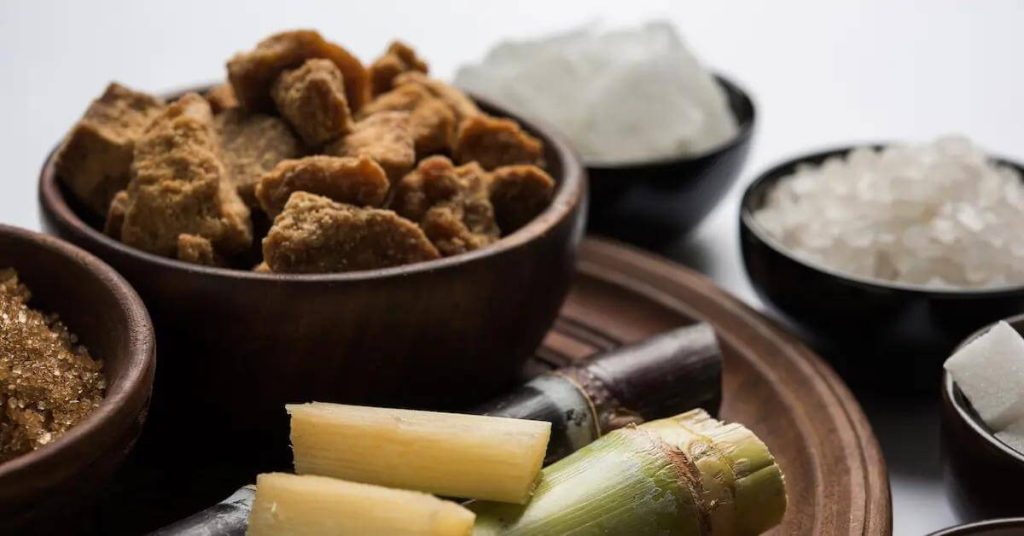A Comprehensive Overview to the Ecological Effect and Sustainability Practices in Walking Cane Sugar Handling
The ecological influence of cane sugar processing presents a complex range of difficulties that warrant cautious assessment. From dirt deterioration and extreme water use to the carbon impact linked with farming and manufacturing, the effects of standard methods are significant. In comparison, the fostering of cutting-edge sustainability actions supplies a path towards a lot more liable manufacturing approaches. Recognizing the interaction between these concerns is essential for stakeholders in the industry. What particular methods can be executed to strike a balance in between efficiency and ecological stewardship? The responses exist in a better check out both the obstacles and possible solutions.
Overview of Walking Cane Sugar Processing
Walking cane sugar processing entails a series of organized steps that change sugarcane into polished sugar. Initially, gathered sugarcane is carried to refining centers, where it undergoes cleansing to remove dirt and debris. Following this, the walking stick is squashed to draw out juice, which is after that cleared up by removing contaminations through home heating and the enhancement of lime.
The cleared up juice goes through dissipation, where water is removed to concentrate the sugar content. These crystals are divided from the continuing to be syrup making use of centrifugation, resulting in raw sugar.
The last item is then dried and packaged for circulation. Throughout this whole procedure, maintaining efficiency and quality assurance is important to ensure the sugar meets industry requirements. Each action in walking stick sugar processing not only contributes to the end product yet also has effects for source use and waste generation, setting the phase for conversations on sustainability and ecological influences related to sugar manufacturing.
Ecological Obstacles of Production
The manufacturing of walking cane sugar offers a number of considerable environmental challenges that warrant interest. One primary issue is the considerable use agrochemicals, consisting of plant foods and pesticides, which can cause soil degradation, biodiversity loss, and contamination of local water resources. The overflow from sugarcane fields typically brings these chemicals into neighboring ecosystems, interfering with water life and impacting the health of areas reliant on these water bodies.
One more challenge is the high power usage connected with sugarcane handling. The boiling and refining phases require significant warm, mainly generated by melting nonrenewable fuel sources, adding to greenhouse gas discharges. Additionally, the large land area required for sugarcane farming can cause deforestation and environment damage, further exacerbating environment modification and threatening wild animals.
Furthermore, the labor techniques in some regions elevate honest concerns, as employees may deal with poor working problems and insufficient incomes. This circumstance typically bolsters a cycle of hardship in neighborhood neighborhoods. Cane Sugar Processing. Dealing with these ecological difficulties is essential for developing a lot more lasting practices in walking stick sugar manufacturing, ultimately profiting both the environment and the neighborhoods associated with this industry
Water and Land Use Influence
Water resources and land application are crucial parts in the cane sugar industry that substantially impact the environment. The growing of sugarcane calls for substantial water input, with estimates suggesting that it can eat up to 2,000 litres of water per kilo of sugar created. This extensive use water frequently brings about deficiency of local water sources, influencing not just the sugarcane plantations however likewise bordering ecological communities and areas that depend on the same water sources for agriculture and domestic use.

Furthermore, land use for sugarcane farming can result in logging and the conversion of natural environments right into monoculture ranches. This practice diminishes biodiversity, disrupts neighborhood environments, and contributes to soil destruction. The expansion of sugarcane areas often intrudes on beneficial agricultural land, producing competitors for sources between food and biofuel production.
Lasting techniques, such as optimizing irrigation methods and applying crop like it rotation, are important to minimize these impacts. By embracing a lot more reliable water use and land management methods, the walking cane sugar sector can reduce its ecological footprint, making sure an equilibrium in between farming productivity and environmental preservation.
Greenhouse Gas Emissions
Greenhouse gas emissions represent a considerable ecological problem within the cane sugar processing industry, especially as farming methods broaden to satisfy worldwide you could try this out need. The farming of sugarcane, a plant that prospers in exotic environments, counts greatly on artificial plant foods and chemicals, which add to nitrous oxide discharges. Additionally, land-use changes, including deforestation for new sugarcane plantations, release carbon dioxide stored in greenery and soil.
During processing, power usage is one more major resource of greenhouse gas exhausts - Cane Sugar Processing. Lots of sugar mills use fossil fuels to power machinery and create warmth, leading to significant carbon footprints. Additionally, the transportation of raw sugarcane and ended up items includes layers of exhausts with fuel burning in automobiles
This involves examining current agricultural techniques, processing techniques, and transport systems to determine locations for improvement and reduction. Dealing with greenhouse gas exhausts is essential for promoting an extra lasting cane sugar market in a transforming climate.

Lasting Practices and Innovations
Sustainable practices and technologies are significantly crucial in the cane sugar handling market as stakeholders look for to minimize environmental influences while preserving productivity. One considerable development is the execution of incorporated crop monitoring, which enhances source use by integrating dirt administration, bug control, and crop rotation strategies. This approach improves return while reducing chemical inputs and maintaining soil health and wellness.
Moreover, the adoption of renewable resource sources, such as biomass from sugarcane deposits, has actually acquired traction - Cane Sugar Processing. By transforming waste items right into power, refining centers can reduce their dependence on fossil fuels, thereby lowering greenhouse gas emissions
Water monitoring techniques have actually likewise seen renovations through the recycling and reusing of water in processing plants, dramatically reducing freshwater consumption. Advancements in modern technology, such as accuracy agriculture, enable farmers to keep an eye on review plant wellness and source usage much more efficiently, making certain lasting cultivation practices.
Furthermore, certification programs like Fair Trade and Jungle Alliance motivate ecologically accountable farming methods and advertise social equity within the supply chain. By accepting these sustainable methods and advancements, the walking cane sugar handling market can boost its strength and add favorably to ecological stewardship.
Final Thought
The environmental effect of walking stick sugar processing presents significant challenges, consisting of dirt destruction, high water usage, and greenhouse gas discharges, alongside ethical concerns associated with labor practices. Addressing these concerns via lasting practices, such as integrated plant monitoring, renewable resource adoption, and water recycling, is necessary. By promoting ecologically responsible and socially equitable methods in sugar production, the sector can alleviate its unfavorable effects, ensuring an extra sustainable future for both communities and communities included in this sector.
Walking cane sugar handling involves a collection of methodical steps that change sugarcane into polished sugar. Each action in walking stick sugar processing not just adds to the final item however additionally has ramifications for source use and waste generation, setting the phase for discussions on sustainability and environmental effects associated with sugar manufacturing.
Greenhouse gas emissions stand for a considerable environmental problem within the cane sugar handling market, particularly as farming practices broaden to meet worldwide need.Sustainable techniques and developments are significantly important in the walking cane sugar processing market as stakeholders look for to decrease ecological influences while maintaining efficiency.The environmental effect of walking cane sugar handling presents considerable obstacles, including soil destruction, high water consumption, and greenhouse gas discharges, along with ethical worries connected to labor practices.